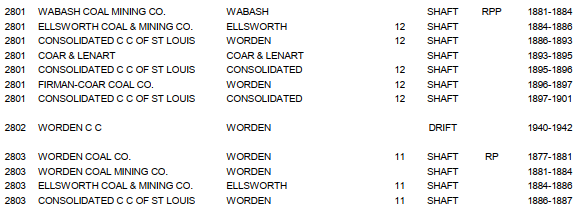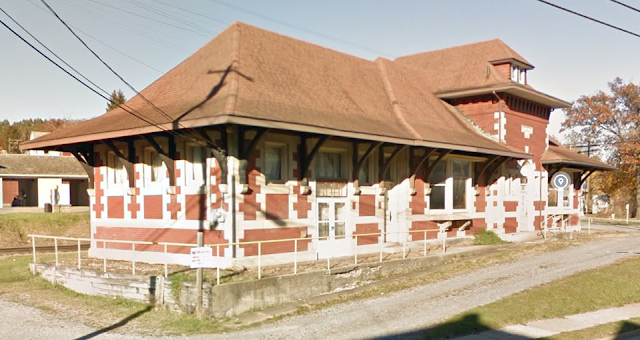Brian R. Wroblewski commented on Deborah's post
The WILTRANCO I would like to touch on a subject not written about much in the popular Great Lakes press and media. The concept of the lake freighter turned tug-barge is a fascinating subject that doesn't get much coverage in local historical circles. Back in 1962 the Wilson Marine Transit Company took on a project that in hindsight appeared to have been about 30 years ahead of its time. The aging 588-foot steamer HORACE S WILKINSON had run its course as a powered vessel. Having been built in 1917 she was mechanically worn out to the point that Wilson could no longer run her at a profit. The company had been known for their forward thinking when it came to technology with many past ships having introduced firsts such as bow thrusters, radiotelephones, and one-piece hatch covers to the Great Lakes. Wilson decided at that time to try and convert the WILKINSON to a 535-foot prototype laker-tug-barge, which, if proven successful, would be copied throughout the fleet. The ship's old superstructure was removed, a stern notch created for a push tug, and auxiliary power installed to run her deck equipment. The old engine room housed water pumps, electric generators, and an air compressor to run the deck winches. In the bow it had a 500hp diesel to run the bowthruster. The large tug BRIAN MCALLISTER was contracted to push her on the Great Lakes, and the combination went into service in June of 1963. The barge was then renamed WILTRANCO as an abbreviation of the Wilson Transit Company. The first season ended uneventfully with the barge being sent to Buffalo with a grain storage cargo for the winter. At only 3,000 horsepower the MCALLISTER proved to be underpowered since she had trouble handling the WILTRANCO and was eventually returned to her owning company in favor of a new build tug called the FRANCIS A. SMALL. This tug was a better match for the WILTRANCO since she was rated near 6,000 HP but the barge had a mind of her own and proved to be even too much for the SMALL. As far as handling the WILTRANCO, that seemed a mystery. Even with her adjustable skegs, the barge was a tough pusher. She also liked to wander all over the lake when being towed and the wires had to be kept short to maintain headway using all the tug's available power. When moving through Buffalo Harbor on her dedicated coal run from Toledo to Tonawanda, the SMALL would tow the barge, and have a G tug on the stern, the reason was that they did not have the proper cables to rig up the SMALL in the notch. On the way downbound in the Black Rock Canal, the SMALL and G tug would tie up the barge at the East wall before the lock. The SMALL and the G tug would then lock through together without the barge. The barge winched itself into the lock for passage, and when she reached the proper water level, the lock gate would open and the SMALL would hook up on the bow of the barge. The G tug would wait until the barge cleared the lock gates and would get the stern towline on the fly. They turned her around just at the red buoy abreast of Semet Solvay dock. She was docked pointing up river. There were a couple of plant employees waiting to help tie up, and there was a catwalk to land on across the mooring dolphins at the coal dock. The tug SMALL would tie up alongside the barge as she was worked over by the unloading rig. The overhead unloading crane was stationary, so they just shifted up and down the dock to be unloaded. It took between 16 to 18 hours to unload. The unloader was a bridge type with a small cab with an operator inside that rode on two rails under the tramway that extended over the barge. The small cab had a couple of spools of cable with a clam bucket to lift the coal to a conveyer belt that ran under River Rd. to a pile on Semet Solvay property. The WILTRANCO's first major accident took place on 6-30-67 while they were coming back to Buffalo loaded with coal for Semet Solvay. It was found that there was a hole in the WILTRANCO due to grounding on some unknown object and that she had been taking on water. The Captain beached the barge on the West side of the canal just before the Peace Bridge heading North. There, a salvage diver stuffed the hole with old bed mattresses and they proceeded to Semet Solvay to unload. The tug-barge combination was doing pretty well until they lost the WILTRANCO on 10-26-67, in some bad weather. By this time the SMALL had the proper cables rigged in the notch, and she was going out the North Entrance light. Bad weather kicked up the lake making the going rough, a cable parted and the barge broke loose from her tug. The WILTRANCO drifted, and ended up stuck on a shoal near Wanakah. Wilson's insurance carrier wrote off the barge as a total loss. The tug SMALL ran out of work to do, was eventually sold off lakes, and then lost in the Atlantic Ocean off the East Coast. The WILTRANCO was salvaged by Clyde Van Enkevort and placed back in service after repairs were made in 1970. She was pushed by the tugs OLIVE L MOORE and LEE REUBEN before being taken out of service in 1973 for the last time. The barge was towed to Santander Spain for scrapping in September of 1973. Hindsight is 20-20 but looking back on the WILTRANCO, some small improvements may have made her a more viable carrier for her timeframe. Even though modern tug-barge coupling technology was still years away, a few modifications may have helped the WILTRANCO. A deeper notch and a better cable system might have given her push tugs a more secure connection at the stern of the barge. A higher horsepower tug with better cable handling equipment on deck right from the start may have given her more control over the barge. A slightly larger crew of possibly 10 men instead of 8 may have lessened the workload and made her a more efficient carrier. All these factors have been worked out over the last 30 years resulting in the very successful articulated and integrated tug-barge units we have today based on almost the same concept as the WILTRANCO, but with a slight tweak here or there. Information from the lake operations of the WILTRANCO was eventually applied to Litton Industries Integrated Tug-Barge Unit PRESQUE ISLE, originally designed for operation by Wilson Marine Transit Company. Many people have the impression that the WILTRANCO's short career was a disaster, and rumors of harsh conditions for the tug crew persist to this day. Most of this can be attributed to the fear of something new coming along since the tug-barge concept at that time was initially seen as a threat to lake sailors used to working on powered vessels. Time has proven this untrue since there are currently a growing number of tug-barges in service with more on the way, but still peacefully co-existing with ships of all types on the Great Lakes and Ocean trades. Once seen as a failure, the WILTRANCO was a concept far ahead of its time that represented the look of things to come. |
.jpg)








.png)
.png)



















































